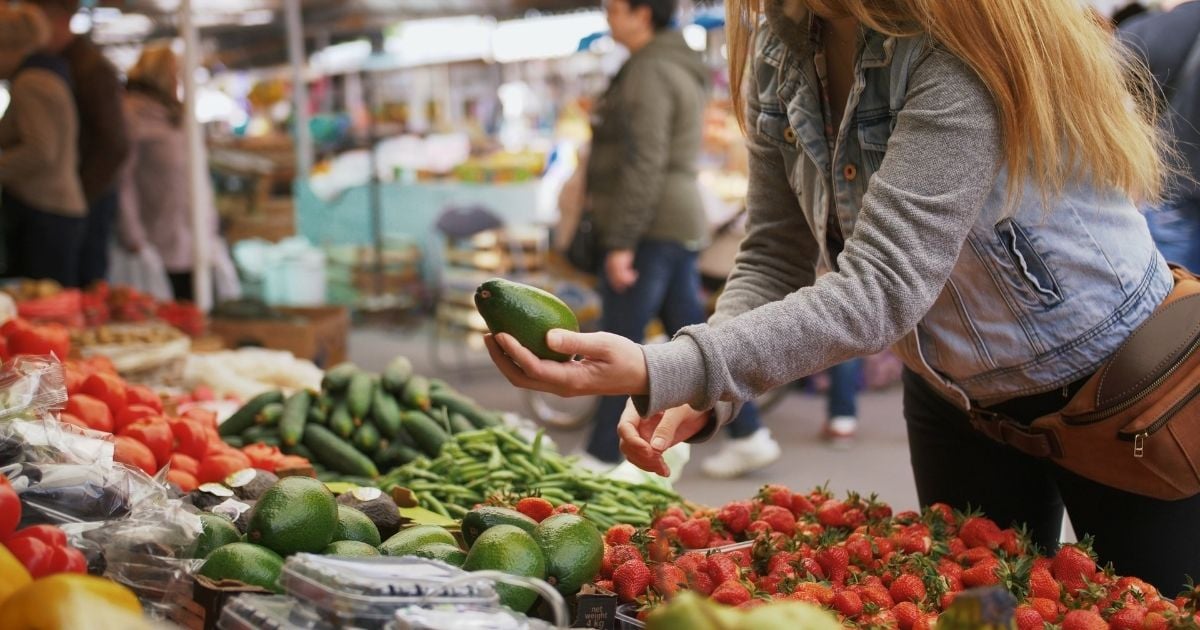 Taking a trip to the grocery store can either be a quick weekly task or an exhausting, expensive shopping trip. To make buying groceries a hassle-free experience, it’s important to plan ahead. This preparation can significantly reduce both the amount of time and money spent at the store each week. Check out the 16 tips below to learn how to save money on grocery shopping.
Taking a trip to the grocery store can either be a quick weekly task or an exhausting, expensive shopping trip. To make buying groceries a hassle-free experience, it’s important to plan ahead. This preparation can significantly reduce both the amount of time and money spent at the store each week. Check out the 16 tips below to learn how to save money on grocery shopping.
1. Create a weekly grocery budget
Creating a grocery budget can be beneficial for individuals who are looking to reduce their monthly food expenses. However, it’s important to avoid comparisons. You might have a limited budget for groceries, while a friend may be able to spend twice as much. There isn’t going to be a dollar amount that works for everyone. Each individual’s food costs will vary based on different factors, like family size, preferences, dietary restrictions, and income.
2. Check your pantry
When you’re deciding what to cook this week, you may flip through recipe books or scroll through meal ideas on Pinterest. While these resources can be great for inspiration, don’t forget to check what items you do already have in your pantry. After checking which ingredients you have on hand, you can put the rest of the necessary items on your grocery list. You might be surprised by how much you can do with what you already have at home.
3. Think simple
Considering easy, uncomplicated meals can be a good choice – even if they aren’t glamorous or Instagram-worthy. For example, a not-so-simple dinner might feature steak as the main course, accompanied by two homemade sides and a warm dessert. While fancy dinners are enjoyable, it’s not practical to have them every evening. Instead, try creating simple dishes that are tasty and enjoyable. A simple dish is one that doesn’t require too many special ingredients or have a lengthy preparation process.
4. Create your list and stick to it
Creating a shopping list for your visit to the grocery store can be challenging. You likely have essential items, such as butter, eggs, and milk, on your list. However, planning meals for the week or two ahead can make it more complicated. Use your meal plan ideas to guide your grocery list. You can even choose curbside pickup or same-day delivery to reduce the chance that you would pick up impulse purchases in-store.
5. Buy in bulk
If it is possible to buy a larger quantity of the foods you use a lot of, consider doing so to maximize savings. Purchasing items in bulk reduces the per-unit prices for each item. This allows you to spend less money on your groceries and make fewer trips to the store. Both perishable and non-perishable foods are available in bulk. However, you’ll want to make sure you take expiration dates into consideration to avoid food waste.
6. Bring your own bags
Bringing your own reusable bags to the store might help you save on groceries. Some stores offer a small discount for using reusable bags, such as taking 5-10 cents off your final grocery bill for each bag you bring. Reusable bags are also sturdier and less likely to break compared to flimsy plastic ones. Although not every store may offer rewards for using your own bags, it’s still a good idea to reduce the use of plastics.
7. Find coupons or exclusive deals
Finding special deals, coupons, or student discounts for your local grocery store can help you spend less on the products you’re already buying. Many stores offer weekly deals or loyalty programs that are helpful when trying to save money and lower food prices. An easy way to find exclusive grocery deals is by checking the ads in your local newspaper or by downloading your store's app. Apps are a great way to find sale prices and can show you other deals you may not have even been aware of.
8. Watch for expiration dates
Although paying attention to expiration dates may be a tedious task, it can make a difference. No one wants to buy a gallon of milk or a cut of meat that is going to expire the day after purchase. Buying products that have dates farthest out can allow you time to get the most use out of every product you are buying. On the other hand, some stores offer exclusive deals on items that are close to the sell-by date, allowing you to get your favorite items for lower than the regular prices. If these items are perishable, take them home to freeze or use right away.
9. Price match multiple stores
Before you waltz into a store and pay full price, you can check which stores are going to give you the lowest prices. If you find a deal on the store’s app, website, or flier, you can ask your favorite store to match the competitor's offer. Price matching can allow you to capitalize on the cheapest grocery store’s prices without having to travel to it. It may require a little research beforehand. Yet, in the end, shopping for groceries at the stores offering a price match guarantee can be worth it.
10. Make homemade food
Whether it’s at a restaurant, drive-through, or delivered to your home, the cost of ordering food can begin to add up. You can combat this cost (and avoid having to shell out even more money for a tip) by making homemade food. Budget friendly home-cooked meals allow you to tailor the food to your preferences, with the added benefit of improving your cooking skills. They also give you more control over portion sizes and ingredients, especially if you have any food allergies. Finally, making food at home will increase the likelihood of leftovers, which helps you stretch your dollars even farther.
11. Buy in-season produce
Buying the right foods in their correct season can help you save money. For example, fruit and veggies that are out of season tend to travel farther to get to the grocery store. Often, these extra distribution costs are passed on to the consumer. Whereas fresh fruits and vegetables are typically more locally sourced, making them less expensive and more flavorful. You may have to do some research to find out what is in season or available at farmer markets in your area.
12. Avoid pre-cut or pre-packaged foods
Pre-cut foods are an easy way of saying you're buying fresh when, in reality, it’s a convenience food. Help your wallet out by buying fresh foods that aren’t already sliced, and learn to properly cut them up yourself. Similarly, avoid buying produce that has extra packaging. Instead of buying a salad packet that comes with dressing and other toppings, buy fresh lettuce and a new dressing. You’ll most likely end up with twice the amount of salad at a fraction of the cost than processed foods.
13. Don’t shop while hungry
Have you ever gone to the grocery store hungry? On an empty stomach, you may be tempted to buy just about everything you see. Shopping hungry is a great way to buy extra snacks and spend your grocery budget on items that aren’t on your list. To spend less money on food, eat a healthy snack or a full meal before you head to the store. Try to stick to your list to reduce the amount of overspending and impulse buying you do while shopping when hungry.
14. Look past eye-level products
It is no coincidence that name brand items are located at eye-level at the grocery store. Those brands pay more for that placement. Often, that extra cost makes its way to the customer in the form of a higher price tag. To find more affordable items, scan the shelf from top to bottom. You may find a great deal on a new brand or lock eyes with a similar product you’ve never considered before.
15. Shop generic brands
Name brands are almost always the most expensive. Most of the time, there are alternative products offered at a lower price with a similar quality. It’s possible your favorite cereal won’t taste the same under a different brand name, but it might be pretty close. There are even some stores, such as Trader Joe’s, that have built their reputation on their excellent store brands. If you buy generic brands, you’ll likely save a few cents each purchase that could really add up over time.
16. Keep track of pricing
The whole point of your grocery budget is to save you money. An easy way to keep track of grocery prices while shopping is by using tally marks. For each item you pick up, make a tally mark on your list for each dollar the item is. This can give you a better sense of what you will be spending when you go to pay with your credit card or debit card.
While everyone needs to eat, not everyone has to pay full price for their meals. Today, you learned some of the easiest ways to save money at the grocery store, like paying attention to product placement on shelves and keeping an eye out for special promotions. These tips can save you both time and money, which prompts just one final question: Which of these money-saving tips are you going to try first?
WHAT'S NEXT?🍎When you're focused on cutting your grocery bill, don't trade wealth for health. Read How to Eat Healthy in College. 💸Trying to spend less money can be tough. Check out 6 Budgeting Tips for College Students to learn more. |









.jpg)




